How do you train legs? Most people perform some type of squat at some point during their lower-body workouts. But the popularity of the squat doesn’t answer that question; it poses new ones. If you’re dead-set on squatting to develop your legs (a wise decision), you then have to determine which kind of squat is right for you.
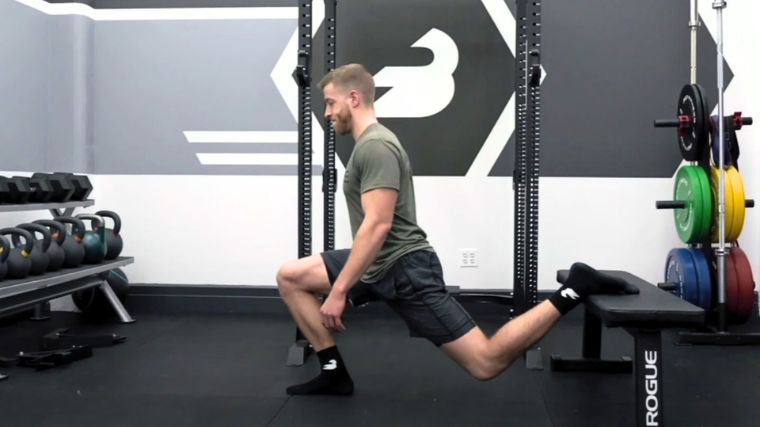
Fortunately, all squats are not created equal, and you needn’t sample every variation under the sun. Bulgarian split squats are, bar none, one of the best leg exercises on the market. Here’s how to do it, why it works, and why you should do more Bulgarian split squats.
Recent Updates: On May 1, 2024, BarBend Senior Writer Jake Dickson updated this article for clarity and to ensure that all content aligns with BarBend’s evolving standards for exercise prescription. Read more about that process here.
How To Do the Bulgarian Split Squat
Both your hip mobility and lower body strength and stamina will benefit tremendously from the Bulgarian split squat. You’ll build plenty of grit, too, as this is a very mentally tiring (but equally rewarding) exercise.
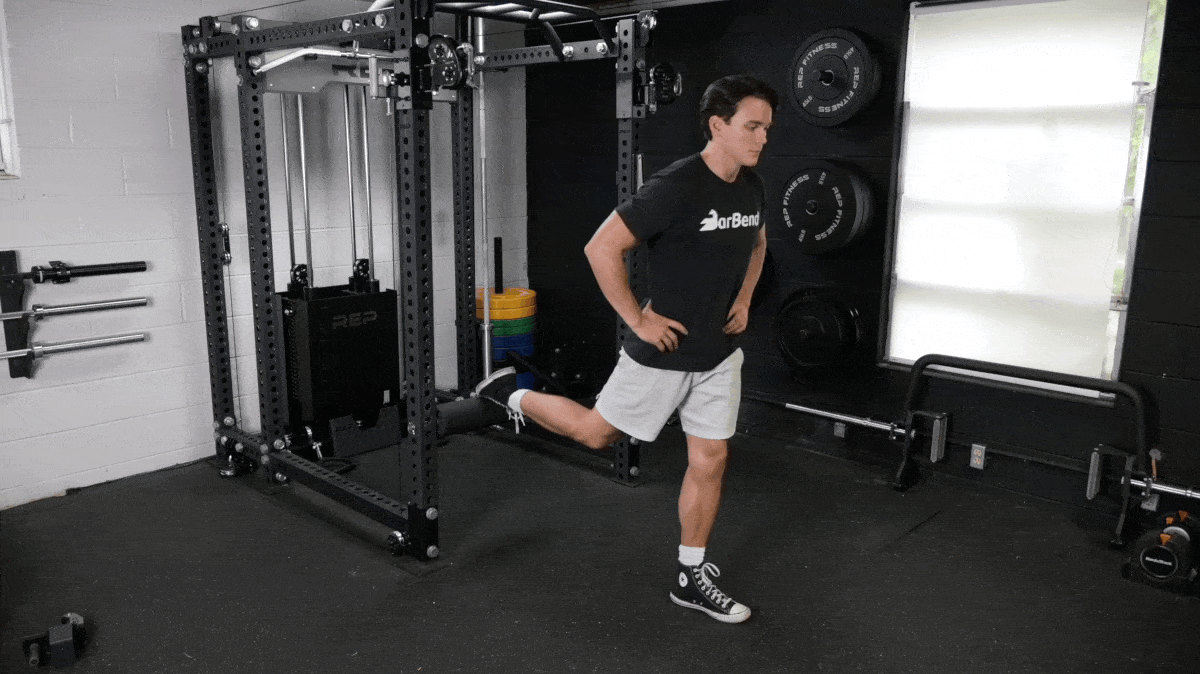
- Step 1 — Stand a few feet in front of whatever surface you’re using to rest your foot on. From here, lift your non-working leg and rest it on a weight bench or box. You can hold your foot up on your toes, or let it rest flat. Then, reach down with your arm to grab ahold of the weight (if you’re using one). Holding the weight on the same side as your working leg will generally be a bit easier than holding it in the opposite arm.
- Step 2 — Once you’re split and stabilized, hold the weight loosely in your hand. Brace your core and then sink down and slightly backward into a squat. Descend as far as your mobility allows without pain or loss of balance.
- Step 3 — Once you’ve reached the bottom of the split squat, reverse the motion by driving your working leg down into the floor. Push yourself back up to the starting position using only your working leg. Your non-working leg should do little more than help you balance yourself.
Sets and Reps
- Your First Time: 3 x 10
- For Hip Strength & Stability: 2 x 15
- For Muscle Growth: 4 x 8
Modifications
- Improve Stability: Use a PVC pipe, dowel, or gently clutch something stable like the frame of a squat rack with one hand to aid your balance as needed.
- Make It Glute-Dominant: Slide your working foot out a bit further and focus on hinging at the hips, pushing your buttocks down and backward. Keep your shin mostly vertical.
- For Athletes: As you stand up from each rep of the Bulgarian split squat, push into the floor with your leg and do a small hop, then pause in the landing position.
Video Guide
Check out BarBend’s video deep-dive into all things Bulgarian split squat, including tricks and tips for maximizing this powerful lift.
Bulgarian Split Squat Variations
There are a surprising number of Bulgarian split squat variations. You can try out some of these tweaks to see if one of them suits your body a bit better — rest assured, it’s still the same exercise overall. In the battle of the split squat vs Bulgarian split squat, your legs are still the ultimate winner.
- Barbell Bulgarian Split Squat: Allows for the greatest possible external load, but demands much of your stability and coordination.
- Resistance Band Bulgarian Split Squat: Great for athletes or to teach power development through one leg at a time.
- Safety Bar Bulgarian Split Squat: This one is similar to using a barbell, but the safety bar is a bit more stable and will stay on your back if you need to gently clasp the frame of a squat rack for balance.
Bulgarian Split Squat Alternatives
You may be keen on performing the Bulgarian split squat but find the mobility or setup too difficult (or easy, possibly). In such cases, turn to one of these alternatives to Bulgarian split squats. They maintain the spirit of the movement but are distinct enough that one of them may better suit your goals.
Walking Lunge

[Read More: Split Squat vs Lunge vs Step Up — What Are the Differences?]
- Grasp a pair of dumbbells or kettlebells at your sides with your feet hip-width apart, toes pointing forward.
- Step forward and sink into a lunge such that both your knees reach approximately 90 degrees. Keep your chest tall, your shoulders back and down, and your core tight.
- Press through your feet to rise back to standing. Either step right into your next step or pause for a moment in the starting position before descending again.
- Keep your reps even on both sides.
Barbell Step-Up
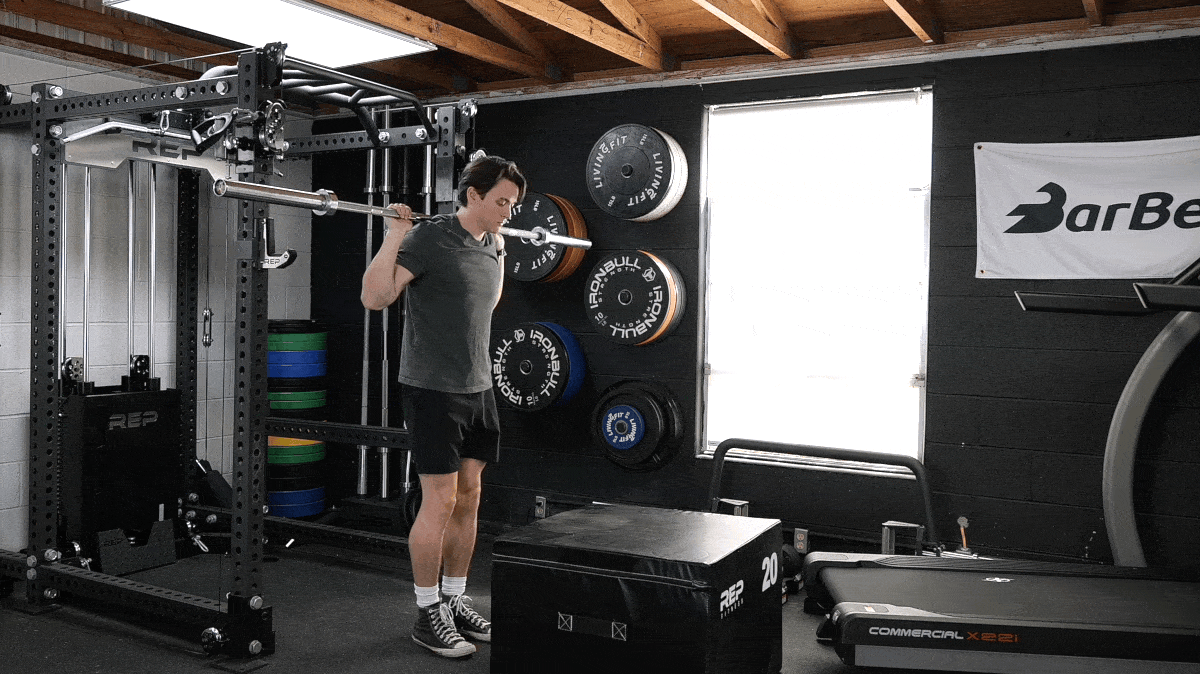
- Set up a step-up platform or plyo box near your squat rack or power rack. Unrack the barbell (or press the bar up then carefully settle it on your back) and position yourself in front of the step or box.
- Step securely onto the box with your left foot. You can slowly drive your right knee up toward your chest as you stand tall, or you can let your right leg remain more neutral.
- With control, step back down from the box and land gently with soft knees. Switch sides and repeat.
Muscles Worked by the Bulgarian Split Squat
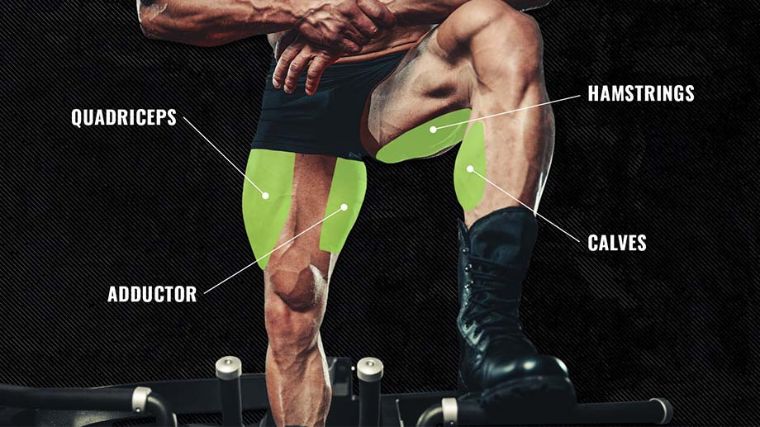
[Read More: The Best Hypertrophy Leg Workout (+Tips and Tricks)]
As a unilateral leg-builder, the Bulgarian squat places an extreme amount of mechanical tension on just about every major muscle in your leg at once. Here are the big players in the Bulgarian split squat.
- Glutes: Performing the Bulgarian split squat for glute development is a solid choice. Your gluteal muscles are tasked with extending, or straightening, your hip during all manner of squat or hinge. If you sink deep into a Bulgarian split squat, your glutes have to contract hard to pull you out of the bottom of the range of motion. You may also be able to get more glute activation during Bulgarians by leaning forward as you squat.
- Quads: Your quadriceps extend your knee; something required of you no matter how you squat. If you allow your knee to travel forward during the Bulgarian split squat, you’ll generally get more quad activation than if you sat back and down.
- Core: The Bulgarian split squat may be a leg movement first and foremost, but the unilateral nature of the exercise challenges your core as well. You have to maintain a rigid, isometric trunk while you squat to avoid falling over. This becomes doubly true if you’re also working with a contralateral (held on the opposite side) implement — think of holding a dumbbell in your left hand while squatting on your right leg.
Benefits of the Bulgarian Split Squat
The Bulgarian split squat is one of the best exercises out there for developing robust athletic qualities. It also happens to be a killer leg movement for beefing up your quads and backside — but that’s not where the benefits end.
Trains Hip Stability and Control
If you squat on two legs exclusively, you may not be training your hips and pelvis to an adequate degree. Bilateral squatting is fantastic for strength and muscle growth, but it’s easy for a two-legged squat to mask potential imbalances in strength or mobility on one side.
[Read More: Explosive Squat Variations to Build Lower Body Power]
The Bulgarian split squat demands that you control and stabilize your hips in order to execute it properly. If you can’t, you’ll simply topple over.
Targeted Muscle Growth
It’s all too easy to develop an imbalance in muscular hypertrophy. No one is perfectly symmetrical from side to side, and minor discrepancies in muscle size are common.
You can use the Bulgarian split squat to bring up lagging body parts. For example, if your left quad is larger and stronger than your right, performing Bulgarian split squats on your right leg first may help balance the scales.
Develops Multiple Athletic Qualities at Once
Being short on time is no reason to skip leg day, but it may cause you to tell yourself “oh, I’ll just do abs at home” — easier said than done.
In the event you need to get as much high-quality work in as you can in a short period, an exercise like the Bulgarian split squat comes in clutch. It may not be the best tool for any one dimension of athleticism, but it covers a lot of ground.
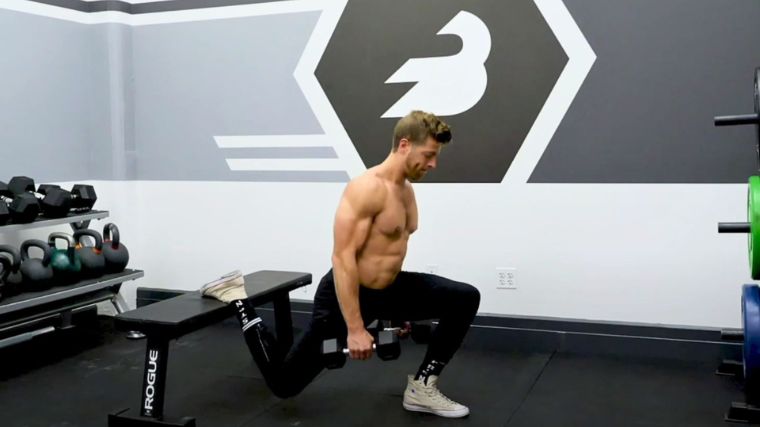
[Read More: Should Weightlifters Do Lunges/Split Squats?]
Bulgarian split squats strengthen your legs, challenge your abs, tax your cardiovascular endurance, and help mobilize your hips all at once.
Common Bulgarian Split Squat Mistakes
Single-leg exercises are hard to perform exceptionally well. Not only are you tasked with properly stimulating the musculature of your working leg, but you have to balance yourself the entire time.
This makes the movement ripe with opportunities for screw-ups; make sure you’re staying away from the following mishaps. Here are the best Bulgarian split squat form pro tips.
Losing Your Balance
Any exercise that demands you suspend yourself on one leg poses a stability demand. However, if you find yourself chronically tipping this way and that during split squats, you might be messing up your setup.
[Read More: The Most Effective Workout Splits, Created by Our Experts]
To address poor balance in the Bulgarian split squat, try moving your working leg a bit closer to your torso. The further away your leg is, the harder it’ll be to balance. You can also try gently holding onto a stable object with your non-working arm, though this comes with its own risks.
Using Too Much External Support
The Bulgarian split squat isn’t exclusively meant to train your balance, but it’s one of the exercise’s biggest selling points.
As such, you can limit its efficacy in a big way by relying too much on an external support structure. This can mean putting too much weight on your back leg, or grabbing onto something stable and using it to help “pull” yourself up out of the squat.
[Read More: Squats Causing You Low Back Pain? Try This Unilateral Leg Workout]
If you’re using the Bulgarian to develop rock-solid stability, try to perform it without stabilizing your body on anything.
Trying to Stay Too Upright
An upright, vertical torso in the squat is generally considered a good thing. That said, you shouldn’t force yourself perpendicular to the floor during the Bulgarian split squat, especially if it feels unnatural.
[Read More: 12 Science-Backed Benefits of Squats You Should Know About]
There’s nothing wrong with allowing yourself to lean forward as needed while you perform Bulgarians. Doing so will incorporate more of the musculature in your hips and lumbar spine into the exercise, which may or may not be appropriate for you depending on your needs.
Build Bulgarian Beef
Despite its namesake, the Bulgarian split squat won’t change your nationality. It will, however, help you build incredibly muscular and strong legs.
You’ll also test your posture, stability, and core strength. Oh, and you can get a bit more flexible in your hips as well. There’s also the cardiovascular benefit on offer if you choose to use high rep sets.
The benefits go on, and on, and on still. Bulgarians are performed by rank beginners and world-class squatters alike for good reason. Plug it into your next leg day and see for yourself.
Frequently Asked Questions
If you’re still wondering about the Bulgarian split squat, look no further. These are several common questions, unpacked and answered.
Can beginners do Bulgarian split squats?
Yes, however, there needs to be an emphasis on form. The rear-foot-elevated Bulgarian split squat requires a base level of balance and strength, so those need to be dialed in before beginners tackle this movement. A great place to start is with the traditional split squat.
What muscles does the Bulgarian split squat work?
Bulgarian split squats primarily work the quads and glutes. In addition, they work the hamstrings, calves, adductors, and require some core work depending on the variation being performed.
How high should my back leg be?
Back leg placement will vary slightly, however, a good rule of thumb is keeping the back leg between one to two feet of elevation. This will change based on what you’re placing the leg on, but this is usually the norm. If mobility is a concern, then start lower.
What’s the difference between the reverse lunge and the split squat?
The primary qualifier in the reverse lunge vs split squat debate is the position of your feet. In the reverse lunge, you will return your working foot to the starting position — regular standing position — between each rep. With split squats, your feet will stay static the entire time, with you simply sinking up and down into the movement.
The same difference applies for the forward lunge vs split squat — in the former, your feet move positions, but in the latter, they don’t.